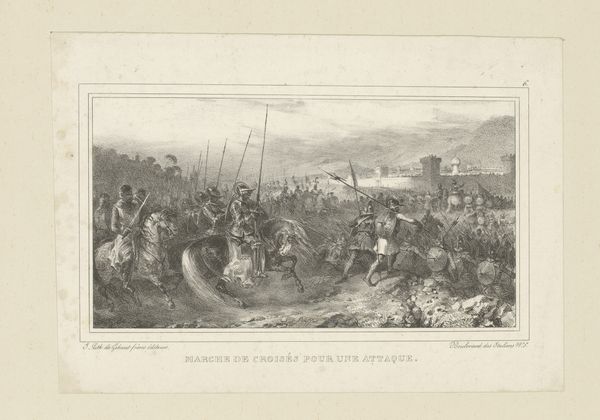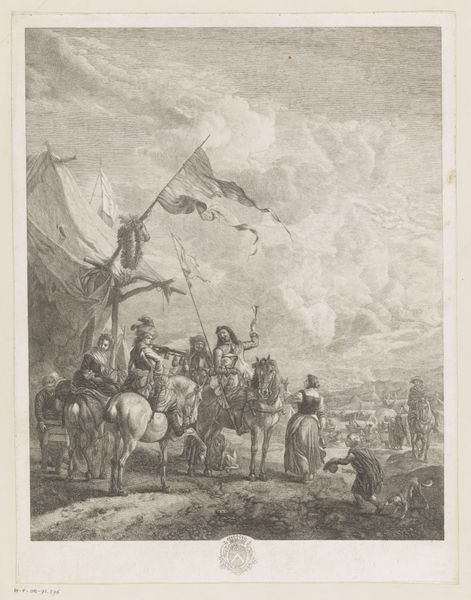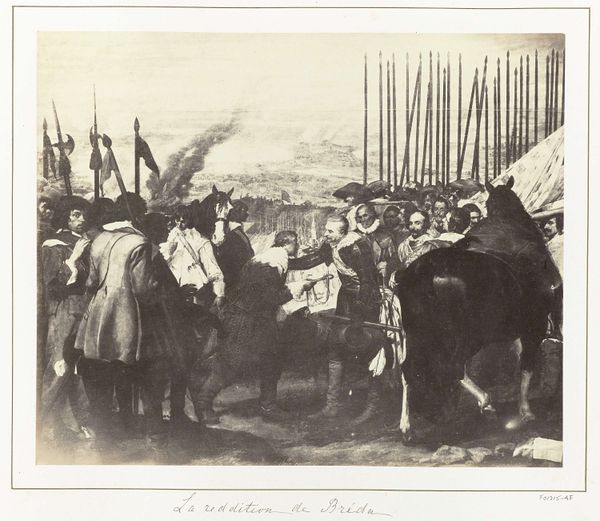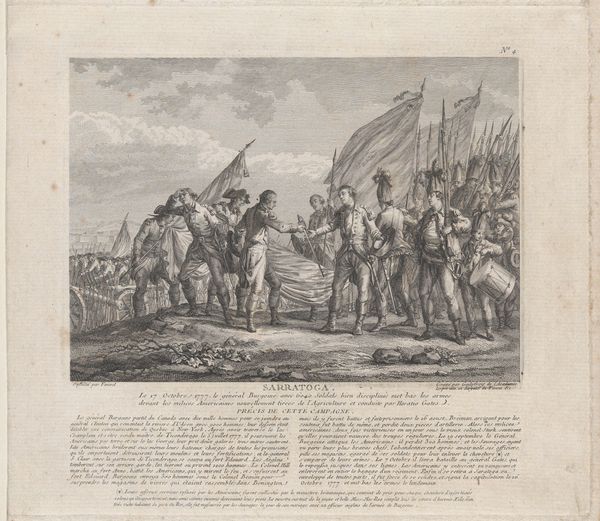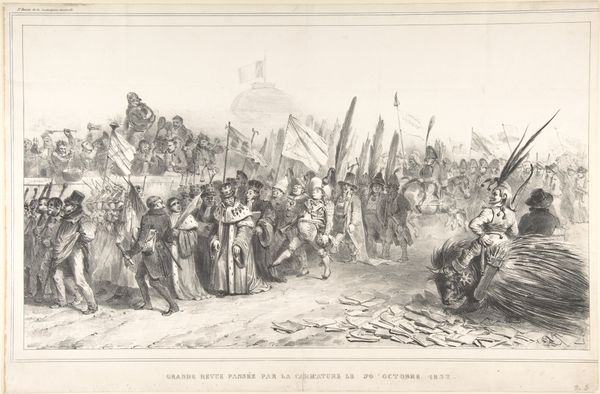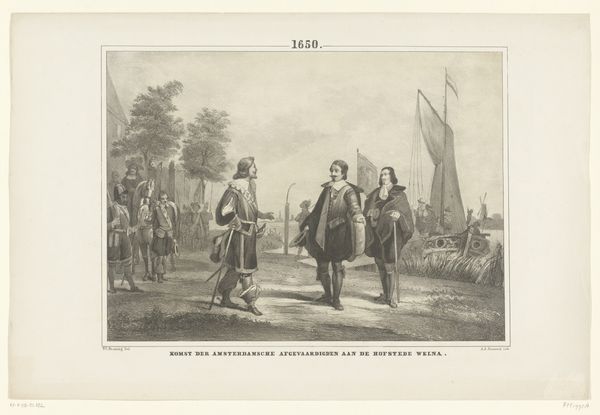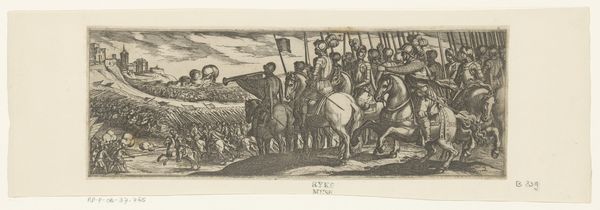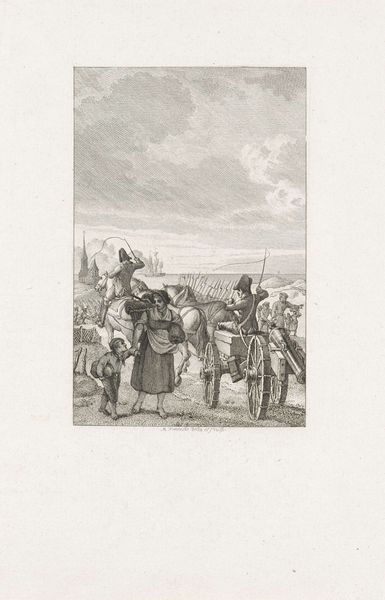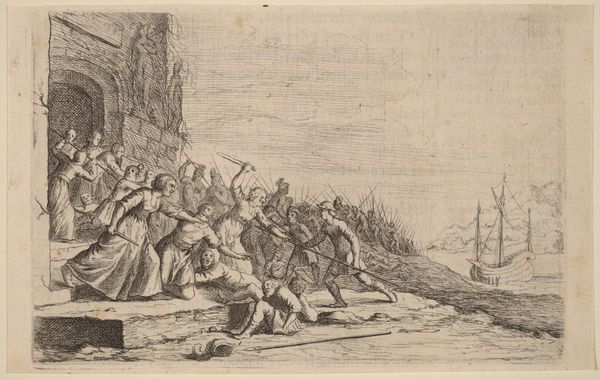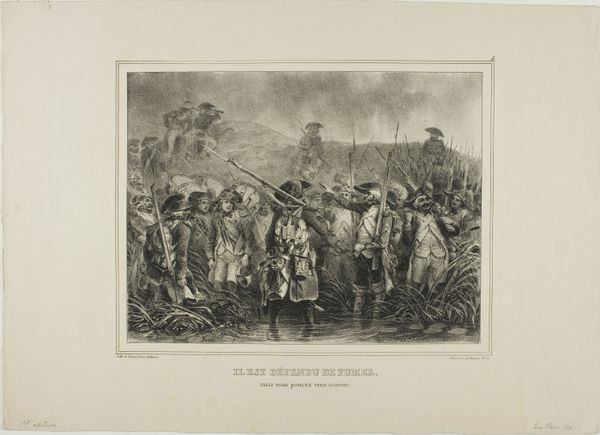
The Surrender at Breda or 'Las Lanzas' (The Lances), after Velázquez 1876
0:00
0:00
drawing, print
#
drawing
#
weapon
# print
#
soldier
#
horse
#
men
#
history-painting
#
academic-art
Dimensions: Sheet: 24 3/16 × 29 1/2 in. (61.4 × 74.9 cm) Plate: 19 × 22 1/4 in. (48.3 × 56.5 cm)
Copyright: Public Domain
Curator: This is Bartolomé Maura's "The Surrender at Breda or 'Las Lanzas' (The Lances), after Velázquez," a drawing and print from 1876. It's currently held here at the Metropolitan Museum of Art. Editor: Immediately striking is the implied dynamism—a captured moment pregnant with larger narratives of conflict and power. The concentration of figures suggests a crucial interaction. Curator: Indeed. Maura recreates Velázquez's celebrated depiction of the 1625 handover of Breda. Considering this is a print, think about the process of reproduction; the layers of mediation transforming the original painterly gestures into lines etched into a plate, and then pressed onto paper. The accessibility that prints afford changes the relationship between art and audience. Editor: I am captivated by the composition itself: The receding lines of lances creating depth, drawing our eye into the heart of the exchange. And, how Maura uses hatching and cross-hatching to suggest depth, mimicking Velázquez's color composition from dark at left, to golden-yellow on the right—it gives the work movement and life, despite the limitations of monochrome. Curator: Absolutely. Furthermore, think about Maura's own social context: late 19th-century Spain grappling with its imperial past. The reproduction of such a heroic depiction of Spanish military victory served to remind viewers of that imperial project. It also points to a culture of art making based on older masterpieces. Editor: And while we are discussing visual language, consider how the lowered gaze and kneeling posture signal the Dutch commander's surrender while also imbuing Spinola with nobility, even magnanimity, which suggests something of the artist's perspective. Curator: Perhaps. But, through the material lens, we see Maura's print not merely as a tribute, but as a piece of cultural currency circulated within specific political and social economies. Editor: A powerful point. What this piece offers is not only a masterclass in technique and pictorial storytelling but it shows an exercise in strategic image-making as well. Curator: It's been fascinating to revisit Maura's print through both a consideration of its formal elements and its status as a cultural artifact. Editor: Agreed. Seeing "The Surrender at Breda" deconstructed with attention to process and composition heightens my appreciation for both Maura’s and Velasquez’s artistic choices.
Comments
No comments
Be the first to comment and join the conversation on the ultimate creative platform.

